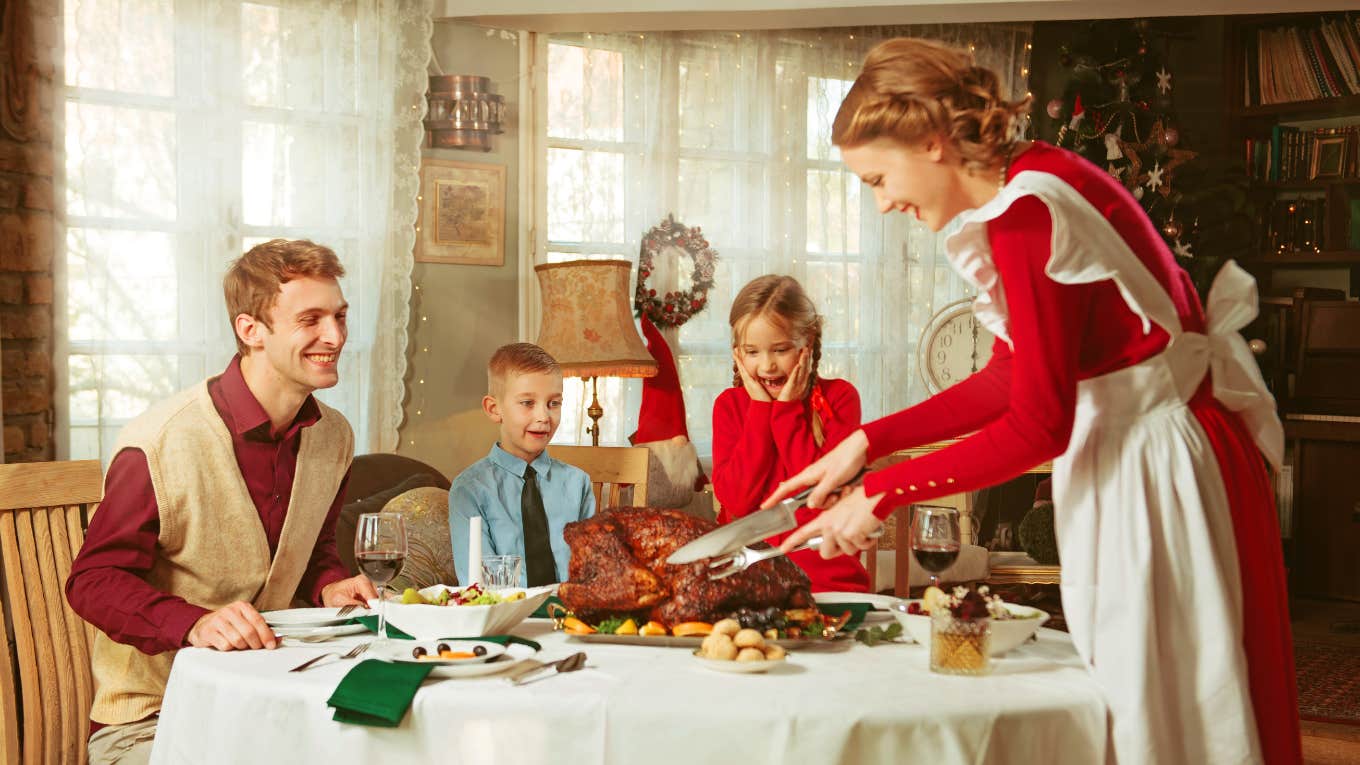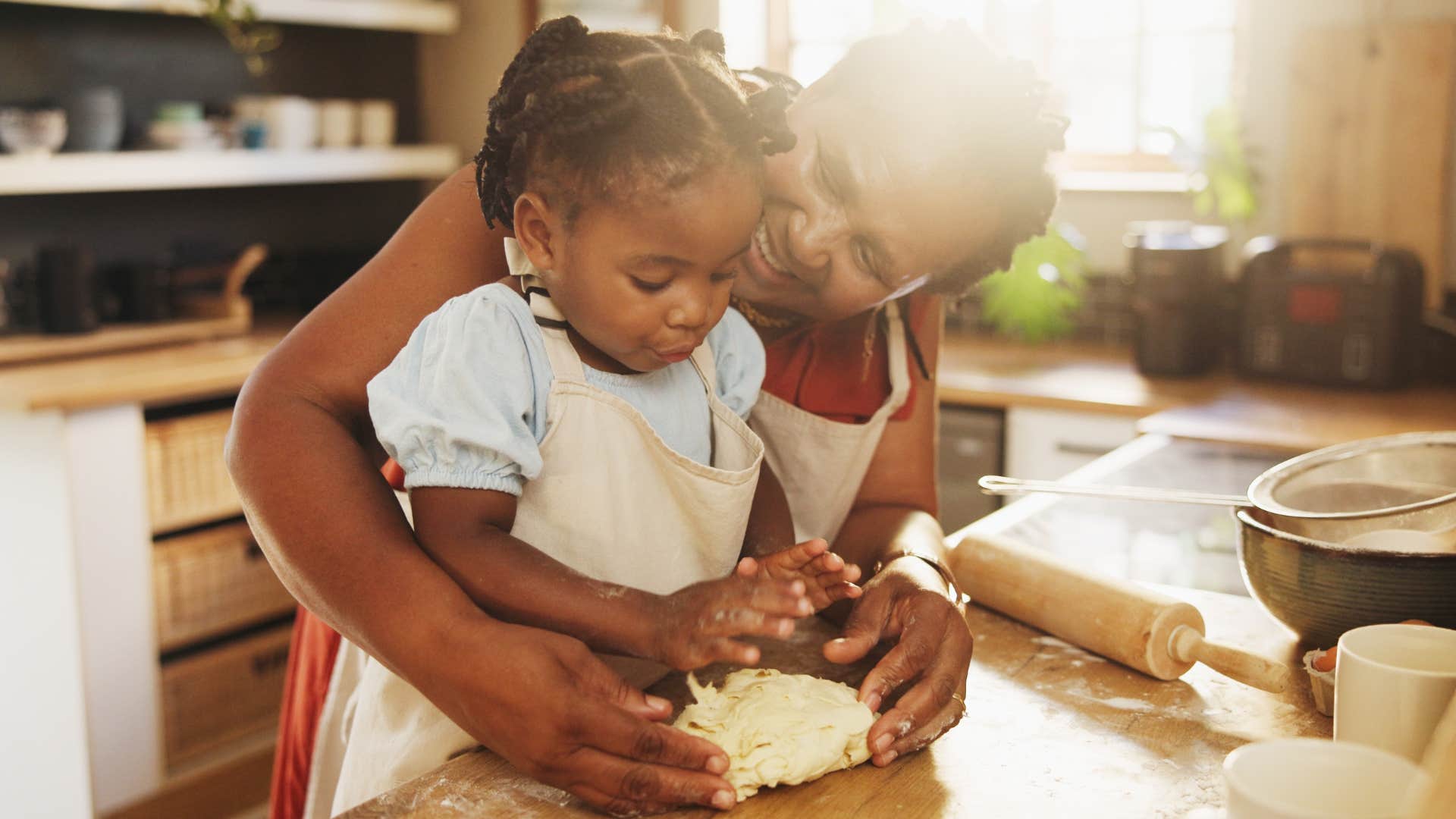11 Old-School Traditions Modern Families Are Leaving Behind
Changing societal, financial, and cultural norms have greatly affected the average American family.
 Tijana Moraca / Shutterstock
Tijana Moraca / Shutterstock Influenced by a variety of financial and sociopolitical factors, there are many old-school traditions modern families are leaving behind, influencing the next generations of young adults as they start their own families, careers, and relationships. While some of them have been subtly forgotten, others have spawned into something completely new - forging the path for a new standard of living, family dynamics, and parenting styles in our modern society.
While traditional family values and the nuclear family structure used to dominate American culture, times have clearly changed. According to CSP Global, it’s more than divorce rates and the average household size that have evolved in recent decades — cultural and societal norms have shifted, as well, altering the reality of many American families in their day-to-day lives.
Here are the 11 old-school traditions modern families are leaving behind
1. Reading a bedtime story
 StockPhotoDirectors | Shutterstock.com
StockPhotoDirectors | Shutterstock.com
While some teachers and professionals argue it’s largely a school’s responsibility to teach kids to read, the practice starts at home with traditions like bedtime stories or library trips.
According to Scientific American, nearly two thirds of American children today can’t read fluently, largely because reading at home has become less popular amid technological developments and new age parenting styles.
Experts at the Literary Hub acknowledge that reading at home, especially regularly and with other family members, sparks better proficiency alongside classroom instruction, however it’s clear that this tradition is slowly fading away.
2. Passing down heirloom items
 Fizkes | Shutterstock.com
Fizkes | Shutterstock.com
While older generations of parents and grandparents might have cherished the keepsakes and heirloom items of their family, new generations of kids are less fortunate in reaping the items their parents celebrated. From jewelry, to clothing items, and furniture, the feasibility of passing down items is nearly impossible, partially due to changing quality standards and largely due to space constraints.
With less than 39% of young adults owning homes in today’s society compared to nearly 50% in the 1990s, there’s little storage space for families who would want to continue passing down luxury furnishings or larger keepsakes for their kids. Especially for modern families hoping to continue the tradition for their kids, the feasibility of passing down smaller items is even less realistic, with quality standards decreasing and making longevity near impossible.
Wealthier families, capable of purchasing luxury items or seeking out products in the name of longevity, might be privy to continuing this old-school tradition, but for the average family, it’s quickly disappearing.
3. Physical family photo albums
 Dragon Images | Shutterstock.com
Dragon Images | Shutterstock.com
With the rise in digital technology and social media, many modern families are steering away from physical photo albums and scrapbooks to save time, money, and space.
While many argue for the resurgence of this old-school tradition, the feasibility of developing photos, purchasing albums, and finding the time to create them is much more difficult today with parents working multiple jobs and kids engaged in more activities than ever.
4. Large ‘family style’ dinners
 PeopleImages.com - Yuri A | Shutterstock.com
PeopleImages.com - Yuri A | Shutterstock.com
According to The Family Dinner Project, fewer than 30% of modern families eat together regularly, compared to between 70 and 80% in the early 1990s.
As more parents work second jobs, children fill their schedules with extracurricular activities and sports, and family dynamic pressures work to inadvertently spark resentment and disconnection between loved ones, the feasibility of planning a meal together is much less realistic today.
5. Sending out physical letters or holiday cards
 takayuki | Shutterstock.com
takayuki | Shutterstock.com
The growth of digital technology in modern households has affected many old-school traditions, including the tendency for families to send out holiday cards or write handwritten letters to their loved ones.
Instead, a text, phone call, or virtual announcement will do, helping families do more in an era of convenience.
Surprisingly, despite being one of the old-school traditions modern families are leaving behind, the slight disappearance of handwritten letters and holiday cards isn’t purely out of distaste. In fact, many people still enjoy receiving them, even if they’re not personally sending any out.
6. Dedicated family time without technology
 arda savasciogullari | Shutterstock.com
arda savasciogullari | Shutterstock.com
Despite surveys from the Pew Research Center that suggest spending time with family is a top priority and valued habit in many households, the majority of modern families aren’t indulging in quality time together to the same extent that many were just a few decades ago.
According to research commissioned by McCain to launch its conversation starter “Teatime to Talk” cards, the average American family only spends around 6 hours of time together weekly, compared to an average of between 12 and 20 hours in the 1990s.
With busy schedules and escapist technology habits, it’s become increasingly difficult to prioritize this quality time in modern households. Even when they are together, they’re likely engrossed in their own hobbies and habits — from stacks of homework, to scrolling on social media, and working while off the clock.
7. Making and keeping family recipes
 Prostock-studio | Shutterstock.com
Prostock-studio | Shutterstock.com
Fewer modern families are preserving, saving, and using family recipes today, largely due to time constraints, technological accessibility, and a shift away from homemade meals in many households.
However, there’s hope for a future resurgence of this old-school tradition, as many Gen Zers have reported a higher commitment to nutritional meals and ingredients in recent years, stemming from health concerns.
Will they be the generation to bring back homemade meals, family dinners, and crumbling recipe cards when — or more reasonably, if — they become parents?
8. Physically renting films for movie nights
 PeopleImages.com - Yuri A | Shutterstock.com
PeopleImages.com - Yuri A | Shutterstock.com
According to Statista data, the average streaming service costs users between $10 and $23 per month, a much more affordable option for renting movies over old-school traditions like drive-in movies, theaters, and renting from stores or DVD boxes.
Especially considering the downward trend in family quality time, it’s not surprising that other niche activities like movie nights have also taken a turn towards fading away.
9. Young adults moving out of family homes
 Ground Picture | Shutterstock.com
Ground Picture | Shutterstock.com
While new adults as young as 18-years-old were moving out of their family homes to start their own lives just a few decades ago, surveys from the Pew Research Center have reported a dramatic shift in this old-school tradition. More than 88% of young adults aged 18 to 29-years-old are still living with a parent today, compared to an average one-third in the 1990s.
Their research also revealed that the number of households headed by this age group has drastically decreased, even in a few months — like the 12% decline between February and July 2020.
Unsurprisingly, the financial barriers and debt this age group has encountered early in life is to blame for this massive shift — influencing their ability to purchase homes, save money, and prepare for their financial futures.
10. Father-daughter dances
 Mladen Zivkovic | Shutterstock.com
Mladen Zivkovic | Shutterstock.com
A fundamental staple for traditional American families just a few decades ago, captured in millions of family photo albums, the “father-daughter dance” is another one of the old-school traditions modern families are leaving behind.
Not only are families consistently more blended today, some school districts and communities have opted for more inclusive “family dances” to take their place.
11. Decorating for the holidays
 Fizkes | Shutterstock.com
Fizkes | Shutterstock.com
Not only are holiday decorations more expensive today than they were for families a few decades ago, according to a McKinsey Consumer Pulse survey, many households don’t have the time or space to accommodate new decorations like a Christmas tree or outdoor lights.
With many parents focused on paying rent or buying basic necessities like groceries, these additional expenses have become less feasible in modern homes.
Zayda Slabbekoorn is a staff writer with a bachelor’s degree in social relations & policy and gender studies who focuses on psychology, relationships, self-help, and human interest stories.
